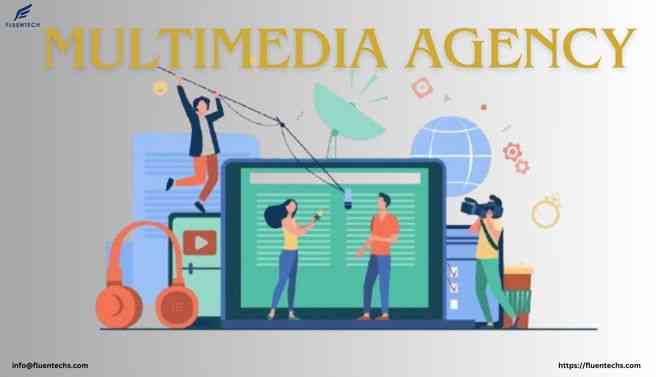Multimedia Content Providers Leading the Future of Digital Entertainment

Multimedia content providers supply a range of digital materials such as videos, music, podcasts, and interactive media, enabling users to access entertainment and information across various platforms. These providers often work as aggregators or distributors, sourcing content from multiple creators to deliver it efficiently to streaming services or directly to consumers.
They play a crucial role in managing, licensing, and distributing diverse media content, ensuring availability and variety for audiences worldwide. This includes specialized companies focusing on niche markets, such as anime or digital games, expanding the scope and reach of multimedia offerings.
Understanding the functions and types of multimedia content providers helps businesses and consumers navigate the complex landscape of digital media. It highlights how content moves from creators to viewers and the critical infrastructure supporting that process.
Key Services Offered by Multimedia Content Providers
Multimedia content providers deliver a range of specialized services designed to create, manage, and distribute digital media. These services address technical production, licensing, and tailored content delivery to meet diverse audience needs.
Streaming Media Solutions
Streaming media solutions enable real-time delivery of video and audio content across various platforms. Providers handle encoding, content delivery networks (CDNs), and adaptive bitrate streaming to ensure smooth playback on devices like smartphones, smart TVs, and computers.
They also offer security features such as digital rights management (DRM) to prevent unauthorized access. Analytics tools track viewer engagement, helping clients optimize content performance.
Efficient streaming involves minimizing latency and buffering, which enhances user experience and supports live events, webinars, and on-demand libraries.
Content Licensing and Distribution
Content licensing involves acquiring and managing rights to use multimedia assets legally. Providers negotiate terms to distribute content across regions and platforms, ensuring compliance with copyright laws.
Distribution services include syndicating content to third-party outlets, app stores, or social media channels. This expands audience reach and can generate additional revenue streams through royalties or subscription models.
Providers often support multi-territory deals and handle localization to fit cultural and legal requirements, facilitating broader access to global audiences.
Production and Post-Production
Production covers planning, filming, and recording multimedia projects. Providers supply expert crews, equipment, and controlled environments for quality capture of video, audio, and graphics.
Post-production services include editing, color correction, sound mixing, and visual effects integration. These processes refine raw footage into polished final products tailored for various platforms.
Specialized services such as scriptwriting, storyboarding, and motion graphics are also common. The goal is to ensure creative consistency and technical excellence that serve marketing or entertainment objectives.
Custom Multimedia Experiences
Custom multimedia experiences focus on interactive and highly personalized content solutions. This may include virtual reality (VR), augmented reality (AR), or interactive web applications designed for user engagement.
Providers work closely with clients to develop tailor-made interfaces, gamification elements, and multi-language support to enhance accessibility and immersion.
These experiences often require integration of diverse media types—video, audio, graphics—and robust backend systems for real-time interaction and analytics, ensuring content relevance and impact.
Trends and Challenges in the Multimedia Content Industry
The multimedia content industry is rapidly evolving, influenced by advancements in technology, changing revenue models, and a growing emphasis on understanding audience behaviors. Providers face pressure to integrate cutting-edge tools while navigating monetization complexities and maximizing user engagement through data-driven insights.
Emerging Technologies in Multimedia
Multimedia providers are increasingly adopting AI to automate content creation, enhance recommendation engines, and improve content moderation. Virtual reality (VR) and augmented reality (AR) are gaining traction, offering immersive experiences that differentiate offerings.
Cloud computing remains critical, enabling scalable storage and faster content delivery across platforms. The rise of edge computing helps reduce latency for streaming services, improving user experiences in real time.
Additionally, blockchain technology is explored to protect intellectual property rights and enable transparent royalty distribution, although it remains in early adoption phases.
Monetization Strategies
Monetization in multimedia content has shifted from traditional advertising and subscriptions to more diversified models. Hybrid approaches combine subscription-based access, ad-supported tiers, and pay-per-use options to target different audience segments.
Dynamic ad insertion and programmatic advertising improve revenue by allowing personalized and context-relevant ads. Some providers employ microtransactions and digital collectibles, leveraging trends around NFTs.
Bundling content with telecom or platform services also creates new revenue streams, while balancing user experience to avoid over-commercialization remains a challenge.
User Engagement and Analytics
Data analytics plays a crucial role in understanding viewer preferences and behavior patterns. Advanced algorithms analyze watch times, drop-off points, and interaction rates to optimize content recommendations.
Real-time analytics help providers adjust content delivery and marketing strategies quickly, maintaining relevance. Cross-platform measurement tools are necessary to track fragmented user journeys across devices and services.
Privacy regulations require careful handling of user data, mandating transparent practices while maintaining actionable insights. Providers increasingly use A/B testing and cohort analysis to refine engagement tactics.
- Art
- Causes
- Crafts
- Dance
- Drinks
- Film
- Fitness
- Food
- Oyunlar
- Gardening
- Health
- Home
- Literature
- Music
- Networking
- Other
- Party
- Religion
- Shopping
- Sports
- Theater
- Wellness



